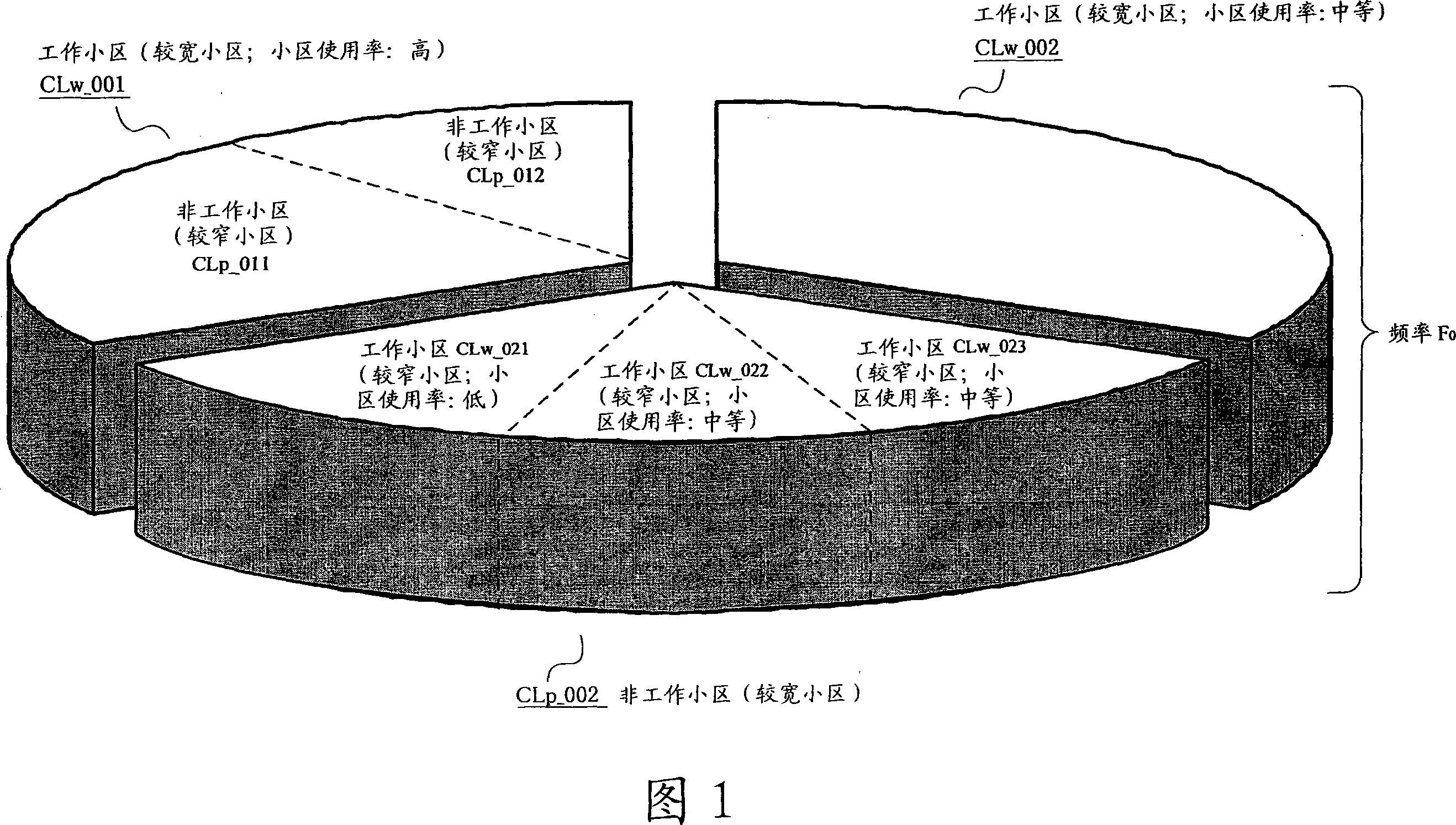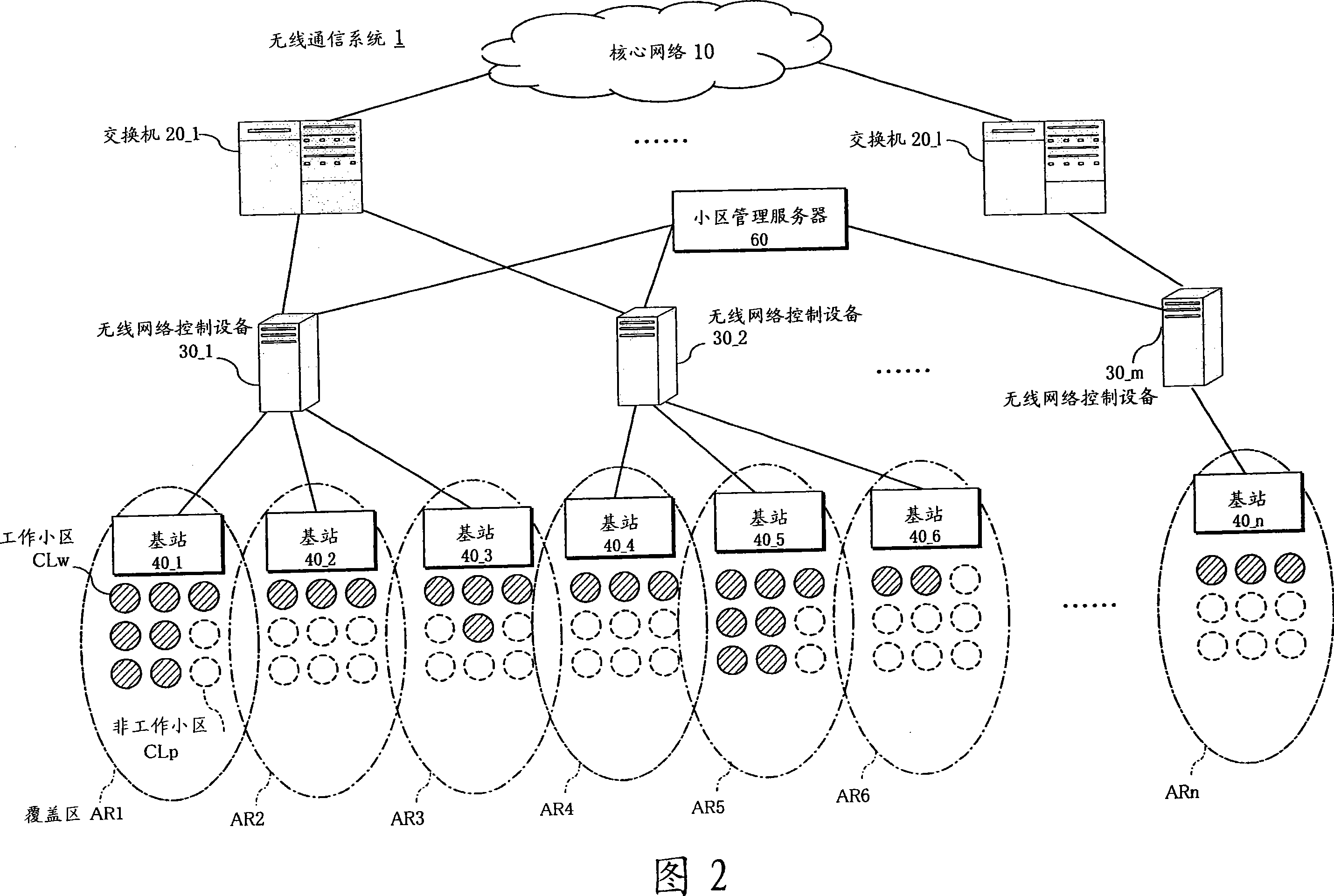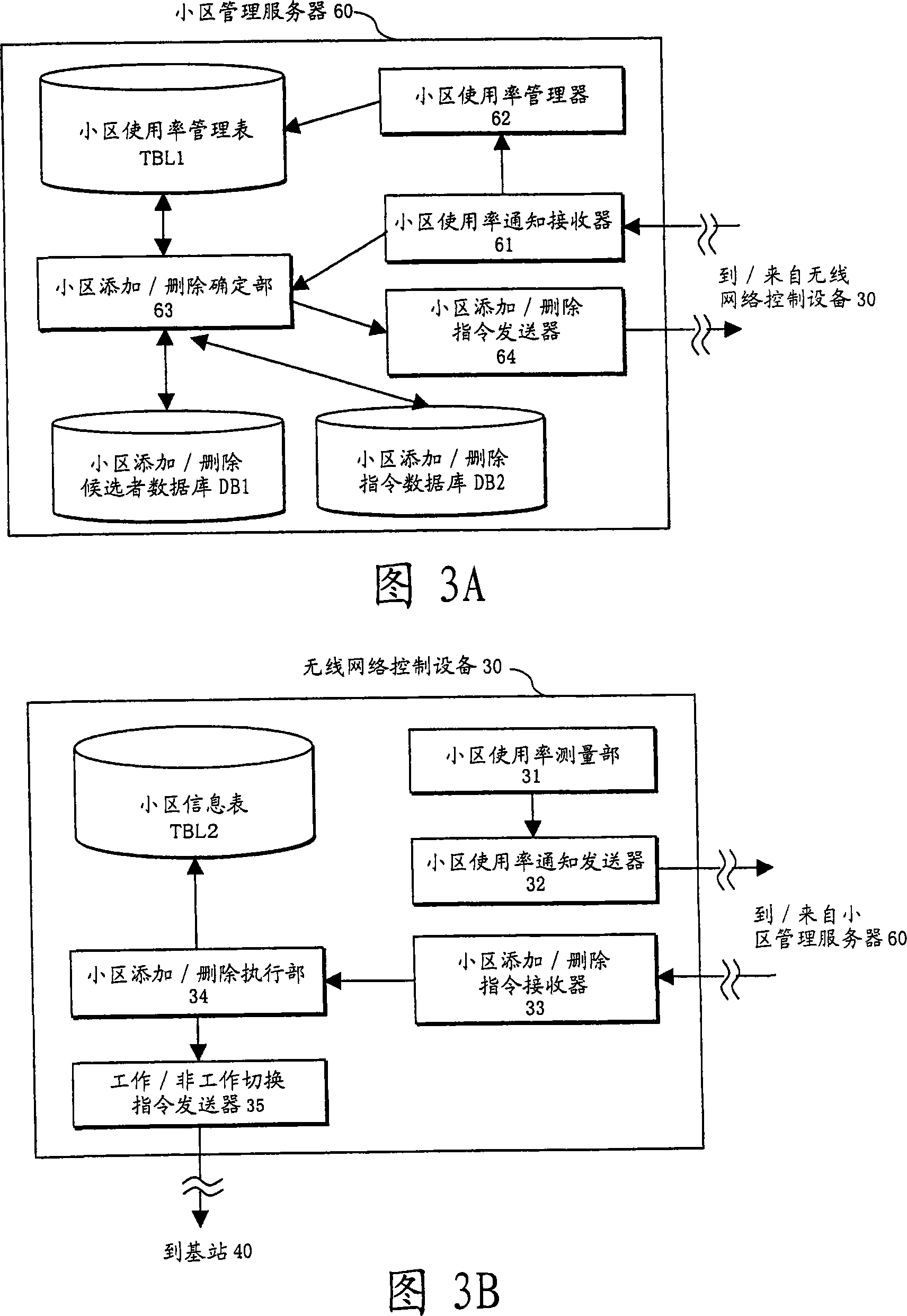Cell management method and apparatus
一种管理方法、小区的技术,应用在多个站之间的通信、网络规划、电气元件等方向,能够解决不能非工作小区分配保护频率、可用频率带宽有限制、不能保证工作小区呼叫等问题,达到改进可靠性和通信质量、防止呼叫丢失事件的效果
- Summary
- Abstract
- Description
- Claims
- Application Information
AI Technical Summary
Problems solved by technology
Method used
Image
Examples
Embodiment approach
[0108] Implementation of I.2.A.c cell utilization rate management table: Figure 6B
[0109] As shown in Figure 6B, in the cell utilization rate management table TBL1, in addition to the cell ID and the cell utilization rate corresponding to the cell ID, there are also radio network control equipment numbers (RNC numbers), base station numbers, and the number used to uniquely identify the coverage area. The directional sector number of each cell CL in the AR, the working status of each cell CL (working / non-working), the number of adjacent wireless network control equipment (adjacent RNC number), when the cell utilization rate is in a high load state A cell ID of a cell CL that becomes a cell addition candidate and a cell deletion candidate, and when the cell usage rate is in a low load state, becomes a cell addition candidate and a cell deletion candidate.
[0110] Taking the cell CL_002 as an example, the cell CL_002 represents the cell with the sector number "002", which is...
Embodiment approach 1
[0133] II.1. Implementation of Add / Delete Target Cell Determination Process [1]: Figures 11A, 11B and 12
[0134] This embodiment executes the cell addition / deletion candidate data registration processing example and the cell addition / deletion instruction data registration processing example according to the state of the cell usage rate.
[0135] II.1.A. Cell Addition / Deletion Candidate Data Registration Processing Example: FIGS. 11A and 11B
[0136] As shown in FIG. 11A , the cell addition / deletion determination section 63 sequentially inquires about all cells CL in the wireless communication system 1 (that is, records corresponding to all cell IDs in the cell utilization rate management table TBL1 shown in FIG. 6B ) ( at step S10).
[0137] When it is determined that the cell utilization rate of the inquired cell CL is higher than the high load state threshold Th_H (at step S11), the cell addition / deletion determining section 63 inquires the high load state correspondi...
Embodiment approach 2
[0171] II.2. Embodiment of Add / Delete Target Cell Determination Process [2]: Figures 13 to 15
[0172] In the present embodiment, cell addition / deletion candidate data registration and cell addition / deletion instruction data registration are performed based on the history and forecast information of cells.
[0173] II.2.A. Cell add / delete command data registration processing embodiment: Figures 13 and 14
[0174] In addition to the processing flow shown in Figure 12, the cell add / delete command data registration shown in Figure 13 also includes the work / non-work switching history and forecast information update (at steps S33 to S38) surrounded by dotted lines in Figure 13 ; however, the processing at steps S33 to S35 is the same as the processing at steps S36 to S38). In the cell utilization rate management table TBL1 shown in FIG. 14, "working / non-working switching history record" and "forecast information" are added to the information items shown in FIG. 6B.
[0175] T...
PUM
 Login to View More
Login to View More Abstract
Description
Claims
Application Information
 Login to View More
Login to View More - R&D
- Intellectual Property
- Life Sciences
- Materials
- Tech Scout
- Unparalleled Data Quality
- Higher Quality Content
- 60% Fewer Hallucinations
Browse by: Latest US Patents, China's latest patents, Technical Efficacy Thesaurus, Application Domain, Technology Topic, Popular Technical Reports.
© 2025 PatSnap. All rights reserved.Legal|Privacy policy|Modern Slavery Act Transparency Statement|Sitemap|About US| Contact US: help@patsnap.com



